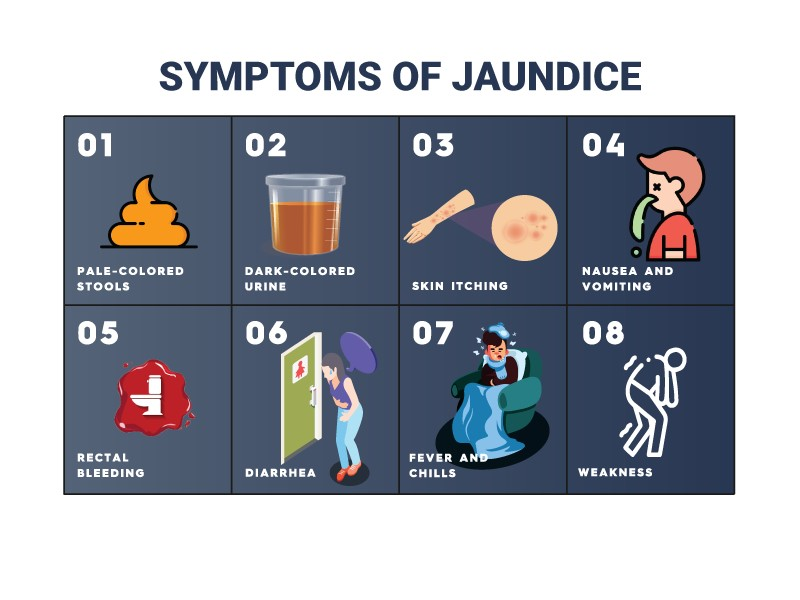What is Jaundice?
Jaundice is when your skin and eyes turn yellow. It happens because of too much bilirubin—a yellow pigment from breaking down old red blood cells—in your blood. Normally, the liver helps remove bilirubin. But during pregnancy, changes in the body can affect this process. Jaundice symptoms in pregnancy are important to catch because they can mean something is wrong with the mother’s liver.
Common Causes of Jaundice in Pregnancy
When you’re pregnant, several things can lead to jaundice symptoms in pregnancy:
- Viral Hepatitis: This includes types A, B, C, and E. These viruses can affect the liver.
- Hepatitis A and E: Spread through food or water, affecting liver function.
- Hepatitis B and C: Transmitted via blood, they can be serious, leading to chronic liver issues.
- Cholestasis of Pregnancy: This occurs when the liver’s bile flow slows or stops. Bile is necessary for digestion.
- Drug-induced or Autoimmune Hepatitis: Certain medications or the immune system attacking the liver can cause jaundice.
- Other Liver Conditions: Diseases like cirrhosis or gallstones can lead to jaundice.
- Pregnancy-specific Complications: One serious condition is HELLP syndrome, which affects the liver and blood.
Understanding these causes helps prevent and manage jaundice symptoms in pregnancy.
Recognizing Jaundice Symptoms in Pregnancy
To catch jaundice symptoms in pregnancy early, look out for:
- Primary signs like yellowing of the skin and eyes.
- Dark urine or pale-colored stools.
- Severe itching that doesn’t go away.
- Other symptoms include feeling very tired, nausea, or pain under the right rib cage.
Difference Between Physiological and Pathological Jaundice
Jaundice symptoms in pregnancy can be classified as physiological or pathological.
- Physiological Jaundice: Common in newborns, but rare during pregnancy.
- Pathological Jaundice: Linked to liver problems, requiring medical attention.
It’s crucial for expecting mothers to know the difference.
The Importance of Timely Medical Intervention
Catching jaundice symptoms in pregnancy early can prevent complications. If ignored, serious issues like liver failure could arise:
- Risks to the mother include hepatitis complications or severe liver issues.
- Risks to the baby include preterm labor, stillbirth, or fetal distress.
Effective Management and Treatment Strategies
Managing jaundice symptoms in pregnancy involves addressing the root cause:
- Antiviral medications for hepatitis help manage viral infections.
- Regular prenatal check-ups are vital for early detection.
- Sometimes delivering the baby early is the best choice for health.
How Dietary and Lifestyle Changes Can Aid Management
Making lifestyle changes can help manage jaundice symptoms in pregnancy:
- Diet Modifications: Eat foods high in antioxidants and vitamins, like fruits and leafy vegetables.
- Hygiene Practices: Washing hands and food properly can prevent hepatitis.
- Medication: Avoid those harmful to the liver.
These changes can support liver health and prevent complications.
The Role of Family Support and Community Resources
Support is key for expecting moms dealing with jaundice symptoms in pregnancy:
- Emotional and physical help from family can ease stress.
- Community programs offer assistance and information.
- It’s crucial to keep open communication with loved ones.
Diagnosis Processes and Understanding Test Results
Diagnosing jaundice symptoms in pregnancy involves several healthcare processes:
- Physical Examination: A healthcare provider may check skin and eyes.
- Liver Function Tests: Blood tests measure bilirubin levels.
- Ultrasound: Imaging can spot liver issues.
Regular screenings and follow-up tests guide treatment decisions.
Conclusion: Empowering Mothers with Knowledge
Learning to spot jaundice symptoms in pregnancy means moms can act quickly, preventing complications. Education empowers mothers, equipping them to make informed decisions. The reassurance of effective treatments and the potential for positive outcomes with early care provides peace of mind for expecting families.

